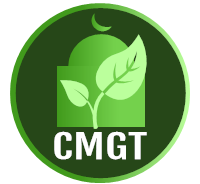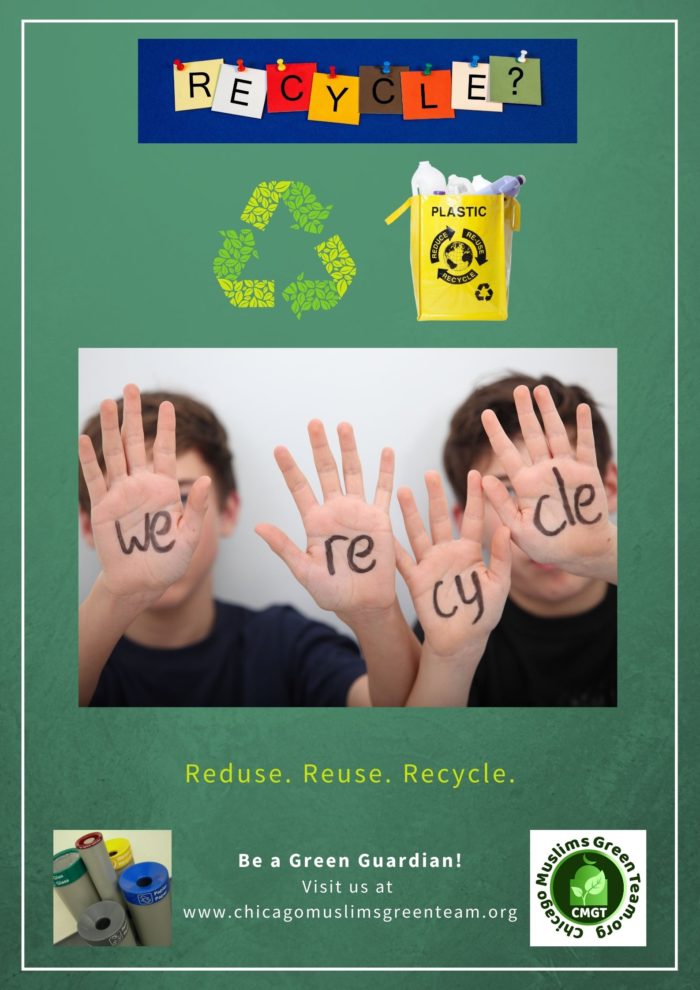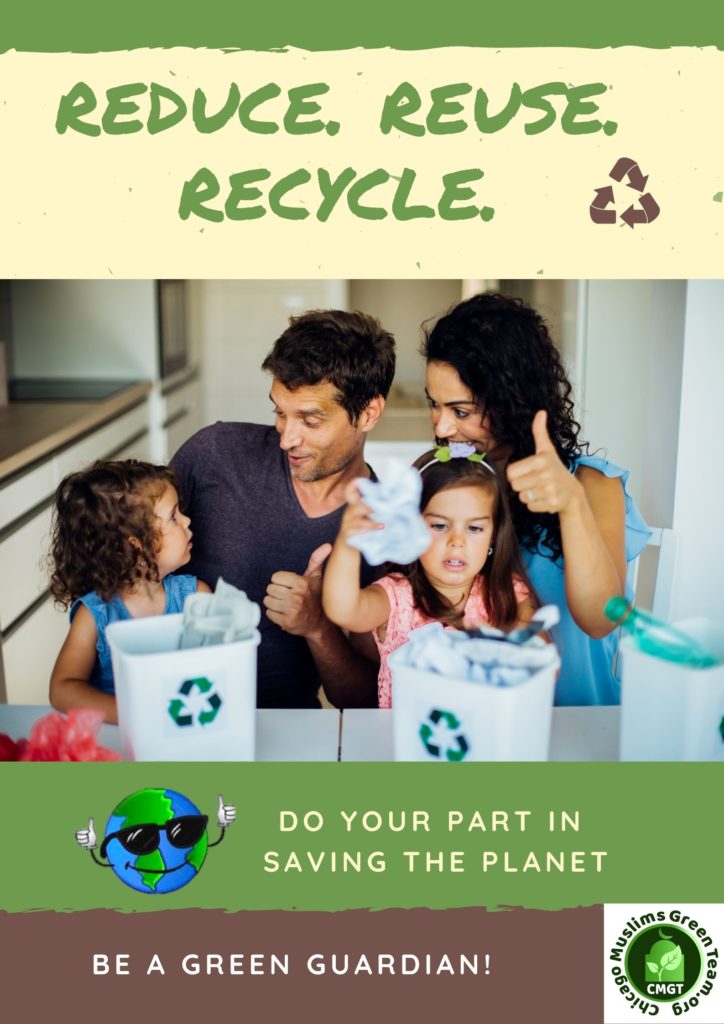Assalaamu ‘alaikum Kiddos!
Happy New Year 2021 and welcome to our first issue of the Green Leaf Newsletter!
Here together we are going to have fun learning about different ways to become a “Green Khalifah” – a person who takes good care of self, family, friends, the environment and our precious planet. Our ailing earth needs us now to do our part in saving and helping it heals. This month let’s talk about RECYCLING and PLASTIC BAGS.
What is “recycling”?
Recycling is collecting certain items that would be thrown away in the trash and turning them into new items that can be used again.
Why is it important to recycle?
Recycling is important because it helps the planet we live on! When we recycle, we create less trash to keep everything in our environment clean and healthy.
How do I recycle?
STOP! Before you throw that thing away in the trash, ask yourself: Can this item be used again? Can it be recycled?
There are many items that we use on a day-to-day basis that can be recycled such as: water bottles, plastic containers, soda cans, newspapers, electronics, cardboard boxes, and much more! Often times if you have seen this symbol:
This item can be recycled!
Now, not everything can be recycled. Certain things have to be thrown away in the trash such as styrofoam, broken glass, straws, pizza boxes and more. Use the link below to learn more with Gus, at National Geographic Kids about what items can be recycled, composted or thrown away while playing the game Recycle Roundup to win all the points! Enjoy this game!!!
What about plastic bags?
Plastic bags are made out of plastic, so they should be recycled right?
Technically yes! Unfortunately, many places that process recycling materials advise against it because the plastic bag’s handles often damage the machines used to sort out and process recycling materials. As a result, millions of plastic bags are thrown away in the trash which often ends up harming humans and animals on land and in the oceans. Do you know that it takes about 500+ years for each plastic bag to photodegrade!!!
Fortunately, there are many different projects you can do at home to recycle your own plastic bags. Can you think of any creative ways to do this?
FYI at the Chicago Muslims Green Team, we have a cool project called, the PLARN Sleeping Mat: Conserve, Crochet, Care . The term “plarn” means plastic yarn. Volunteers in this project collect CLEAN recycled plastic bags and creatively crochet them into a sleeping mat. They then distribute the sleeping mats made to our neighbors who need them especially for folks who don’t have housing or beds. Each mat takes about 700 plastic bags to make. That means, we can save about 700 plastic bags from the landfills. The Plarn Project team aims to make about 100 plarn sleeping mats by April 2021 insha Allah. How many plastic bags do we need – guess??? YES! We can save approximately 70,000 plastic bags from the landfills. How cool is that – saving both our planet and helping our neighbors in need? Check out the project and volunteer if you can.
If you can’t find any plastic bags at home, there are certain local stores near you such as Target, Walmart, Jewel-Osco, Harris Teeter and many others that will have bins located inside to recycle those plastic bags for you. For your information, those bins will then be sent to specific recycling centers that have special equipment to properly recycle your plastic bags.
Here are 7 reasons why it is important to recycle your plastic bags:
According to the Center of Biological Diversity,
- Americans use 100 billion plastic bags each year which is not great for the environment because it requires about 12 million barrels of oil to make.
- About 100,000 marine animals every year are killed by plastic bags.
- 1 in 3 leatherback sea turtles have been found with plastic bags in their stomachs.
- Plastic bags are typically only used for an approximate of 12 minutes.
- It takes about 500+ years for a plastic bag to degrade in a landfill.
- According to Waste Management, only about 1% of plastic bags used are recycled.
- According to Secretariat of the Pacific Regional Environment Programme (SPREP), it is estimated that about 80% of plastic bags in the ocean originate from landfills.
As you can see recycling plastic bags is an incredibly important step in helping our environment and we all have to work together in any way that we can to help heal our planet! So, keep recycling!!!







